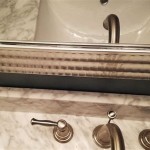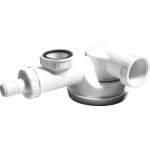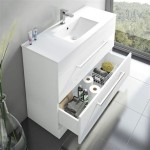How to Fix a Noisy Bathroom Vent Fan
Bathroom vent fans play a crucial role in maintaining a healthy and comfortable environment. They remove excess moisture, preventing mold growth and protecting surfaces from water damage. A properly functioning fan also eliminates unpleasant odors, contributing to improved indoor air quality. However, these devices can become noisy over time, disrupting the tranquility of the bathroom and signaling potential maintenance needs. Addressing a noisy bathroom vent fan promptly can prevent further damage and ensure its continued efficient operation.
Diagnosing the source of the noise is the initial step in resolving the issue. Several factors can contribute to a noisy fan, ranging from simple debris accumulation to more complex mechanical problems. A systematic approach to troubleshooting will help identify the root cause and determine the appropriate course of action. This may involve cleaning, lubrication, or, in more severe cases, component replacement.
Identifying the Source of the Noise
Before attempting any repairs, it is essential to pinpoint the origin of the unwanted sound. This process often involves careful observation and listening. The type of noise—whether it is a rattling, grinding, squealing, or humming sound—can provide valuable clues. Examine the fan while it is running and try to isolate the specific area where the noise is most prominent. Safety is paramount; always disconnect the power to the fan at the circuit breaker before conducting any inspections or repairs.
Start by visually inspecting the fan housing and the surrounding area. Look for any loose screws, debris, or obstructions that may be causing the noise. Check the fan blades for cracks, bends, or imbalances. A damaged or warped blade can create significant vibrations and noise. Also, observe whether the fan housing is securely mounted to the ceiling joists. Loose mounting can amplify vibrations and contribute to noise.
Once the visual inspection is complete, carefully listen to the fan while it is operating. Pay attention to the sound quality and its consistency. A rattling sound might indicate loose components, while a grinding sound could suggest a problem with the motor bearings. A squealing sound is often associated with friction, possibly caused by a lack of lubrication. A humming sound might point to an electrical issue or a problem with the motor itself.
If the noise seems to be coming from within the motor housing, further investigation may be required. However, proceed with caution, as tampering with the motor can be dangerous if one is not familiar with electrical components. In some cases, the motor may be sealed and not easily accessible for repair. If the motor is readily accessible, a closer examination of the bearings and other internal components may reveal the source of the noise.
Another potential source of noise can be the ductwork connected to the fan. If the ductwork is loose or improperly secured, it can vibrate and create a rattling sound. Check the connections between the fan and the ductwork, and ensure that all joints are tightly sealed. Also, inspect the ductwork for any obstructions or kinks that could be restricting airflow and causing the fan to work harder and generate more noise.
Cleaning and Lubrication
Often, a noisy bathroom vent fan can be resolved with simple cleaning and lubrication. Over time, dust, lint, and other debris can accumulate on the fan blades, motor, and housing, causing the fan to become unbalanced and noisy. Cleaning the fan thoroughly can remove these contaminants and restore its smooth operation. Similarly, lubricating the motor bearings can reduce friction and eliminate squealing or grinding sounds.
Begin by disconnecting the power to the fan at the circuit breaker. This is an essential safety precaution to prevent electrical shock. Once the power is off, carefully remove the fan cover. Most fan covers are held in place with clips or screws. Once the cover is removed, gently vacuum the fan blades, motor, and housing to remove any loose dust and debris. Use a soft brush or cloth to clean any stubborn dirt or grime.
Pay particular attention to the fan blades, as they can accumulate a significant amount of dust over time. Use a damp cloth to wipe the blades clean, ensuring that they are completely dry before reassembling the fan. Also, clean the inside of the fan housing to remove any accumulated dust or debris. A clean environment will help the fan operate more efficiently and quietly.
After cleaning the fan, lubricate the motor bearings. Most bathroom vent fans have sealed bearings that do not require lubrication. However, some older models may have bearings that can be lubricated with a few drops of light machine oil. Apply the oil sparingly, avoiding over-lubrication, which can attract more dust and debris. If one is unsure about the type of bearings, consult the fan's manual or contact the manufacturer for guidance.
When lubricating the bearings, access can sometimes be difficult. One might need to partially disassemble the fan motor housing to locate the bearings. Always document the disassembly process with photos or notes to ensure correct reassembly. After lubricating the bearings, carefully reassemble the fan and test its operation. If the noise persists, it may indicate a more serious problem that requires further attention.
Repairing or Replacing Components
If cleaning and lubrication do not resolve the noise issue, it may be necessary to repair or replace certain components of the fan. This could involve replacing the fan motor, the fan blades, or the entire fan unit. The decision of whether to repair or replace the fan will depend on the extent of the damage, the age of the fan, and the availability of replacement parts.
If the fan motor is the source of the noise and is not easily repairable, replacing it may be the most practical solution. Replacement motors are often available for purchase from hardware stores or online retailers. When selecting a replacement motor, ensure that it is compatible with the existing fan model and voltage requirements. Installing an incompatible motor can damage the fan or create a safety hazard.
Before replacing the motor, carefully disconnect the electrical wiring and remove the old motor from the fan housing. Take note of the wiring connections to ensure that the new motor is wired correctly. Install the new motor in the fan housing and reconnect the electrical wiring. Double-check all connections to ensure that they are secure and properly insulated. After installing the new motor, test the fan to verify that it is operating properly and that the noise has been eliminated.
If the fan blades are damaged or warped, replacing them can also reduce noise. Replacement fan blades are typically available for purchase from the fan manufacturer or from online retailers. When selecting replacement blades, ensure that they are the correct size and shape for the existing fan model. Installing incorrect blades can affect the fan's performance and create unwanted noise.
If the fan housing is damaged or corroded, it may be necessary to replace the entire fan unit. This is especially true for older fans that are no longer readily repairable. When selecting a replacement fan, consider the size of the bathroom and the required airflow rate. Choose a fan that is adequately sized for the room to ensure that it can effectively remove moisture and odors. Also, look for a fan that is energy-efficient and quiet in operation. A new fan can provide improved performance and quieter operation compared to an old, worn-out unit.
When replacing the entire fan unit, follow the manufacturer's instructions for installation. This will typically involve disconnecting the electrical wiring, removing the old fan housing, and installing the new fan housing. Ensure that the new fan is securely mounted to the ceiling joists and that all electrical connections are properly made. After installing the new fan, test its operation to verify that it is functioning correctly and that the noise has been resolved.
Sometimes, the noise is due to the fan not being properly secured. Over time, the mounting screws can loosen, allowing the fan to vibrate against the ceiling joists. Check the mounting screws and tighten them if necessary. If the screw holes are stripped, use longer screws or wood shims to provide a more secure anchor. In some cases, it may be necessary to reinforce the mounting brackets to prevent the fan from vibrating.

Fix A Noisy Bathroom Fan Diy Family Handyman

Fix Your Noisy Bathroom Fan In 10 Minutes

9 Easy Ways How To Fix A Noisy Bathroom Fan

How To Fix A Noisy Bathroom Fan Addressing Irregular Sounds Soundproof Living

How To Fix A Noisy Bathroom Exhaust Fan Easy Project

Fix Your Noisy Bathroom Fan In 10 Minutes

Noisy Bathroom Exhaust Fan How To Easily Fix Without Replacing

How To Fix A Noisy Bathroom Fan 6 Step Guide Home Inspector Secrets

How To Fix A Noisy Bathroom Exhaust Fan Easy Project

High Pitched Noise Coming From Bathroom Fan When Off
Related Posts







